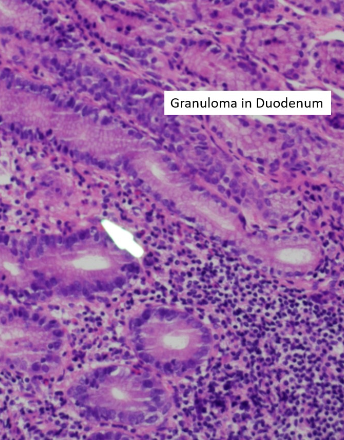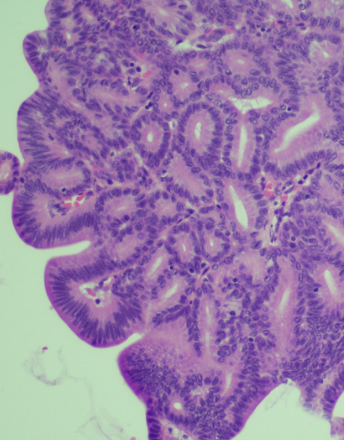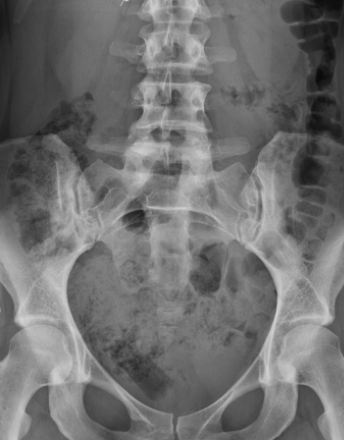Loading
Archive
Recommended Articles
Hepatitis Treatment in the Last 20 Years: A Short Review
The hepatitis C virus (HCV) genome was isolated during the late 1980s using molecular cloning techniques. It is recognized as the cause of most cases of percutaneously transmitted non-A, non-B hepatitis. It is estimated, that up to 200 million people worldwide are infected with the hepatitis C virus (HCV), more than 3% of the world population. The predominant risk factors for HCV are intravenous drug use, tattoos, exposure to blood products, occupational risk and ethnicity.
DILI, HILI, RUCAM Algorithm, and AI, the Artificial Intelligence: Provocative issues, Progress, and Proposals
Artificial Intelligence (AI) principles published in 1956 included the recommendation to use algorithms for solving complex processes. The creation of the Roussel Uclaf Causality Assessment Method (RUCAM) was published in 1993 with integration of an intelligent algorithm to solve issues of causality assessment in cases of complex suspected drug induced liver injury (DILI) cases. Other causality assessment methods (CAMs) published before the era of AI and RUCAM followed rather general principles without precise and valid algorithm.
Spontaneous Resolution of Infected Pancreatic Necrosis after Fistulization into Upper Gastrointestinal Tract
We have recently published a case of spontaneous gastric decompression and resolution of an infected walled-off pancreatic necrosis (WOPN). According to the so-called “step-up approach”, which is a staged and multidisciplinary approach for the treatment of necrotizing pancreatitis, we have outlined the need of treating WOPN and their complications according to the clinical course of the patients and not only to radiological and laboratory findings.
Ultrasounds Importance in the Clinic and Medical Diagnostics
Ultrasounds are acoustic vibrations that are not perceived by the human ear as their frequency is greater than 20,000 Hz. They are artificially generated by the action of the electric current, whose polarity is periodically reversed, on a quartz crystal, subjecting it, by the action of the electromagnetic field created, to successive contractions and expansions. This alternation of movements generates vibrations, which, transmitted to cellular and intercellular structures, cause collisions and generate heat.
The Potential Role of SEPT6 in Liver Fibrosis and Human Hepatocellular Carcinoma
Liver fibrosis is a reversible wound-healing response in which a variety of cells and factors are involved in and results in excessive deposition of extracellular matrix (ECM). Cirrhosis is one of the significant causes of portal hypertension and end-stage liver disease, and it is the 14th most common cause of death around the world. Approximately 1.03 million people worldwide die from liver cirrhosis every year.
Prognostic Utility of Ferritin Transferrin Ratio in Hepatocellular Carcinoma
There is growing body of literature to identify novel prognostic markers in hepatocellular carcinoma (HCC), including serum ferritin (SF), transferrin levels, alfa fetoprotein (AFP), and neutrophil to lymphocyte ratio (NLR). Chronic inflammation and fibrogenesis are considered quite essential in the oncogenesis of HCC. The trigger for this inflammation could range from viral hepatitis, alcoholic cirrhosis, to non-alcoholic fatty liver disease. Also, iron overload as in hereditary hemochromatosis is linked to one of the factors for HCC oncogenesis.
Evolution of Endoscopic Ampullectomy and Considerations for a Contemporary Approach
Endoscopic ampullectomy (or endoscopic resection of lesions associated with the ampulla of Vater) has now been performed for more than 25 years and has been supported by the literature, however, since its inception, the efficacy of this approach is still somewhat underappreciated. In our recent publication, despite its high success rate for clearance of ampullary adenomas, even with quite an extensive lateral spreading tumour component (LST-P), we wished to re-iterate and even celebrate the value of endoscopic ampullectomy, discuss our technique, highlight the risk of post procedural haemorrhage
Gastric Cancer: A Brief Review, from Risk Factors to Treatment
Gastric cancer (GC), also known as stomach cancer, is a worldwide health problem. Anatomically, it can occur from the gastroesophageal junction to distal portions of the stomach. Considering both sexes, worldwide, it is the 5th most common neoplasm (5.7%) and the 3rd cause of mortality among malignancies, leading to approximately 782,000 deaths in 2018. The incidence varies geographically but 50% of new cases are diagnosed in developed countries. High incidence is observed in Asia, Latin America, and in the central and eastern parts of Europe. There are several ways to classify GC, but the most used is Lauren’s Classification, which proposes two main histological groups: intestinal and diffuse. This classification is important because there are marked etiological, pathological, and epidemiological differences between the subgroups, guiding the clinical approach for each patient.
Bouveret’s Syndrome: An Extensive Summary of the Literature
Bouveret’s syndrome is a rare condition characterized by gastric outlet obstruction from an ectopic gallstone, facilitated by aberrant connection of the biliary and luminal gastrointestinal tracts. Establishing a diagnosis of Bouveret’s syndrome can be aided by clinical, radiologic, and endoscopic assessments and importantly relies on prompt diagnosis and management. Despite its rarity, the disease confers a high rate of morbidity and mortality.
Endoscopic Ultrasound-Guided Liver Biopsy, Is It Ready for Prime Time?
Liver biopsy continues to be the gold-standard with regards to diagnosis and staging of the majority of liver diseases. Serologic markers certainly have helped in diagnosing various autoimmune and viral-related liver diseases. Furthermore, laboratory testing and imaging studies such as liver elastography have allowed us to non-invasively assess fibrosis. Unfortunately, there are shortcomings with these forms of testing. False positives or laboratory errors will lead to misleading diagnoses. Situations can also arise during which there are diagnostic dilemmas, such as an obese patient with positive autoimmune serology and elevated liver chemistries.
The Link of Nutrient Fluxes to Hepatic Insulin Resistance at Gene Expression
Results of epidemiological studies show that obesity and type 2 diabetes mellitus have become a public health concern globally, which has substantial health, social and economic impacts. A common characteristic of human obesity and type 2 diabetes is insulin resistance, which a given amount of insulin produces less than normal physiological responses, usually demonstrated as diminished glucose lowering effect of insulin.
Intestinal Barrier Function – a Novel Target to modulate Diet-induced Metabolic Diseases
High fat high cholesterol containing Western-type diet (WD)-induced obesity remains one of the major causes for the development of metabolic syndrome and associated metabolic diseases such as Type 2 Diabetes (T2DM) and atherosclerosis (that leads to cardiovascular diseases including heart disease and stroke). In addition to changes in lipid metabolism and excessive lipid accumulation, recent studies have also described direct effects of WD on gut microbiome and attributed dysbiosis of gut flora to the observed metabolic effects.
The Consideration of Endometriosis in Women with Persistent Gastrointestinal Symptoms and a Novel Neuromusculoskeletal Treatment Approach
Endometriosis is a chronic, hormone-dependent, inflammatory disease, characterized by the presence and growth of endometrial tissue outside the uterine cavity and it is associated with chronic pelvic pain and infertility. Worldwide, approximately 176 million women between the ages of 15 and 49 are affected by endometriosis. Endometriosis is a complex disease that induces a chronic inflammatory process and can be challenging to treat. Chronic pelvic pain syndrome (CPPS) is defined as pelvic pain lasting greater than three to six months that is not solely related to menstruation, sexual activity or bowel movements.
Paraduodenal Pancreatitis: Many faces of the Same Diagnostic Challenge
The term paraduodenal pancreatitis and groove pancreatitis are today used interchangeably, with all conditions having similar manifestations; they refer to an uncommon and still under-recognized form of recurrent or chronic pancreatitis that affects the so-called groove. The groove represents the potential space between the head of the pancreas, medially and the second part of the duodenum, laterally. It is bordered by the duodenal bulb and the third part of the duodenum in the superior and posteroinferior aspects, respectively.
Pharmacologic Therapy with Niacin for Nonalcoholic Fatty Liver Disease (NAFLD): Emerging Evidence
In pharmacologic doses niacin (nicotinic acid) has been used clinically for over six decades for atherogenic dyslipidemia and reduction of cardiovascular event risk. In combination with statin therapy, it effects regression of coronary atherosclerosis. Emerging evidence indicates a new potential use for niacin for the treatment of NAFLD and its complications. Despite this enormous amount of data on niacin, there is confusion and misconceptions about its use of a drug rather than as a vitamin, its formulations, and how it can be used in clinical practice.
The Dual Role of Macrophages during Hepatitis B Infection
Hepatitis B virus (HBV) chronically infects more than 250 million individuals worldwide and is responsible for more than 800,000 deaths per year by promoting end-stage liver diseases, among which decompensated cirrhosis and hepatocellular carcinoma (HCC) (WHO, July 2020) are prominent. Studies performed in chimpanzees or in animalversion of HBV (woodchuck HBV: WHBV) highlighted the lack of immune responses against the virus upon primary infection.
Refractory Gastro-oesophageal Reflux Disease and Laryngopharyngeal Reflux - Use the Bottom up Approach
The pathophysiology of typical gastro-oesophageal reflux disease (GORD) symptoms and reflux oesophagitis is associated with excess acid reflux, but both refractory GORD and laryngopharyngeal reflux (LPR) have strong links with functional gut disorders. Oesophageal pH impedance monitoring, our accepted gold standard for diagnosing GORD, has significant shortcomings when assessing proximal oesophageal and in particular pharyngeal reflux. In addition, identifying potential contamination of other parts of the respiratory tract such as lungs or sinuses is not possible.
Are We Close to Achieving a HBV Cure? Risk for Hepatocellular Carcinoma Persists Despite Long-term HBV Suppression: An Update on Our Experience
Since the discovery of the hepatitis B virus (HBV) by Blumberg et al., great progress has been made in understanding the pathogenesis of the virus and its role in hepatocellular carcinoma (HCC). It is estimated that hepatitis B is responsible for about 50% of the HCC cases worldwide. Because of geographic variations in HBV incidence, the burden of HBV-related HCC (HBV-HCC) is highest in endemic areas such as Asian-Pacific and sub- Saharan Africa and lowest in the United States and the West.
Fatty Liver and Hepatocellular Carcinoma
Fatty liver (FL) is the most common wide-world liver disease that is nowadays demonstrating an increasing prevalence trend. In sharp contrast, the most common causes of liver diseases, such as viral causes, are decreasing thanks to advances in antiviral therapies. Non-alcoholic fatty liver disease (NAFLD) is characterized by hepatic fat accumulation, often associated with insulin resistance (IR), and defined by the presence of steatosis in at least 5% of hepatocytes in absence of relevant alcohol intake.
Conversion Surgery for Hepatocellular Carcinoma Treated with Lenvatinb
Multidisciplinary treatment is widely applied for advanced hepatocellular carcinoma (HCC). Systemic therapy is recommended and can provide a modest prognosis for HCC in Barcelona Clinic Liver Cancer staging C. Lenvatinib is a newly developed multityrosine kinase inhibitor and has become a more preferred targeted drug than sorafenib to achieve conversion surgery due to its higher tumor necrosis effect.











